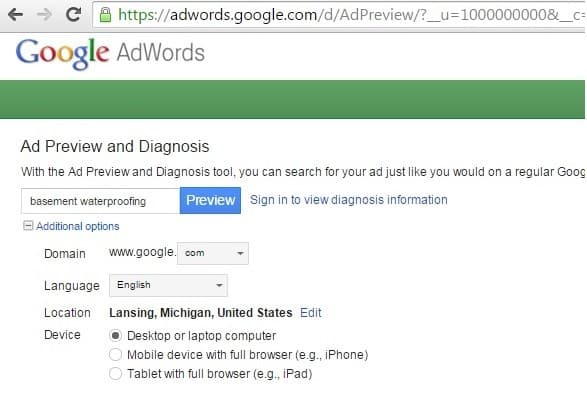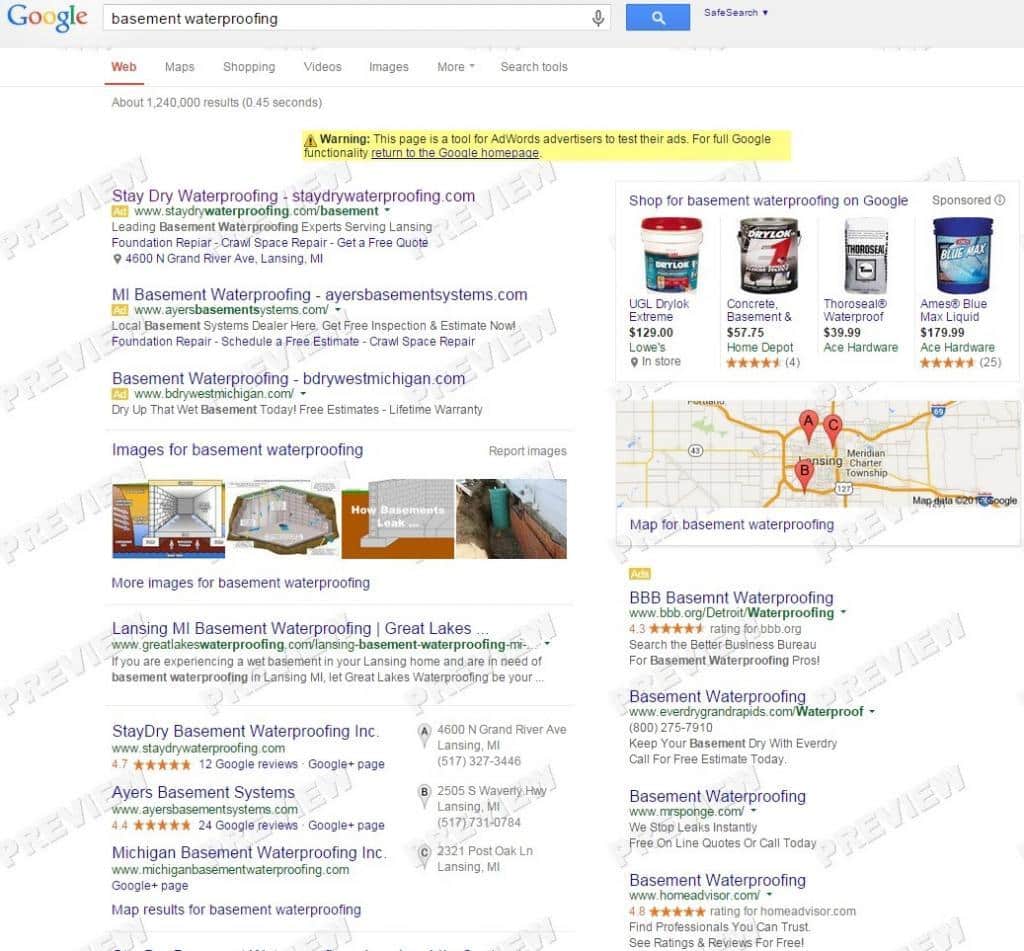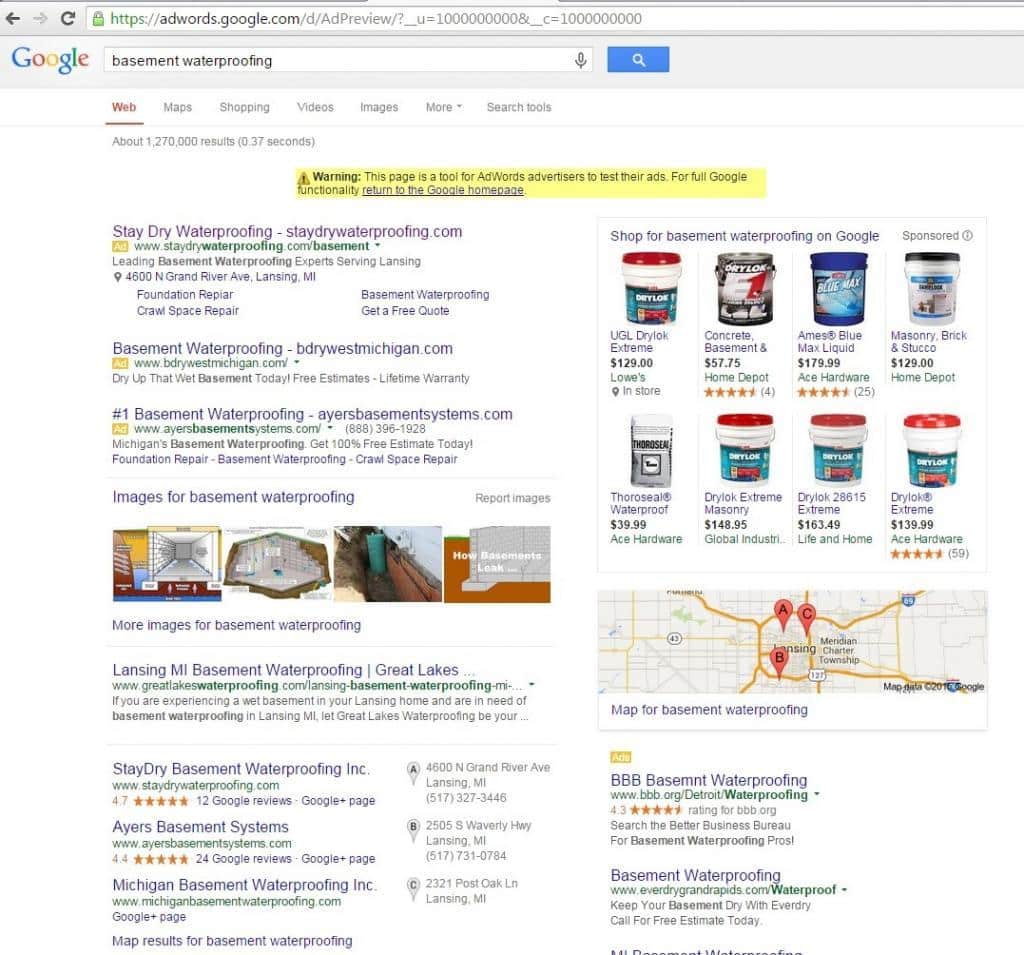Last Updated on July 9, 2015 by admin
Of all of the tools available in search marketing, the one that I use quite a bit in both SEO and PPC is the Ad Preview Tool. The Ad Preview Tool is packaged as a tool for AdWords advertisers, but it can also be used for SEO purposes as well. It is particularly helpful for gaining intelligence in local SEO. As long as you have a Google login, you can see the tool here at https://adwords.google.com/d/AdPreview.
PPC
Nearly all of the PPC accounts I manage have campaigns that are utilizing geo-targets. With AdWords reporting I can see what my average position and click through rates are, but I want to know more. I want to know how my ad copy looks against the competition. Are they using numbers, offers, keyword insertion? Are they using geography in their copy and how well are they using extensions? I can only see this by using the ad preview tool and getting a real look at what is going on in that market. Viewing what searchers see in that market helps me effectively asses and make any ad copy or extension adjustments.

From a device setting standpoint, I may also want to see the differences in how my ads are showing across desktops and laptops, tablets and smart phones. This may push me to create more mobile specific ads, depending on what the competition is doing.

Additionally, I use and encourage clients to use the ad preview tool for in-market tests. The reason for this is it helps keep false impression numbers down, ensuring there is not issues with click through rate and quality scores. (I realize that a handful of impressions should not impact click through rate or quality score that much, but why chance it?) And yes, we have had clients click on their own ads… it happens. Using this tool avoids inflating impressions and preventing clicks.
SEO
We use Positionly to track client rankings, in which there is an option to see mapped listings. These rankings are nice, but sometimes we want to dig further in areas where we want to see what the SERPs are looking like. For this, we have to see what users in that region are seeing. We can change our preferences in Google, but when hopping around across the dozens of clients we manage this can be cumbersome.
Using the Ad Preview Tool gives us a cleaner view of how both organic and mapped listings are showing for clients. We can see what the mapped listings are showing, as well as where our listing is showing. We see what page Google is indexing using for that listing in that area. For example, is the home page showing or is the client’s location or contact us page showing up. Additionally, it is helpful to view how the page title and meta description is being displayed in that area and give us some feedback on whether or not we should change those to enhance organic click through rate.

Client Interaction
If you have been a search marketing professional for any period of time, you have gotten that phone call or email from a client “I keep Googling <insert keyword here> and we aren’t coming up!!” This complaint can be for both organic searches or PPC searches. And it can be a really difficult thing to handle, and difficult to show that your work is paying off.
In our business, perception matters and no matter how many reports you show a client that show organic rankings being strong or PPC average position being high, if on a given day they don’t see themselves in a result it can result in panic. In today’s SERP searchers can see results that are all over the place depending on how much they have searched, their login, device, history, preferences and location. This is why I stress to clients to use the Ad Preview Tool for the cleanest, unfiltered view of what the average SERP for the query looks like. This can give clients the truest view of how their are sites coming up on PPC, organic and mapped listings.
In summary, the Ad Preview Tool is very useful to use in intelligence and strategy when trying to proxy into other markets to see how search listings are coming up. It can be helpful in both PPC and localized SEO, as well as help putting your clients’ minds at ease.

Leave a Reply